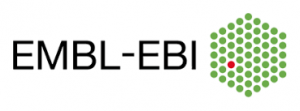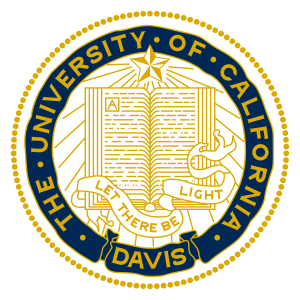CCP CRISPR course 2020

TWO LAST VACANCIES FOR THE SECOND MODULE (CRISPR GENE EDITING COURSE). REGISTER A.S.A.P.
Date: 27 – 29 April 2020
Place: Czech Centre for Phenogenomics, BIOCEV campus, Prumyslova 595, Vestec, Czech Republic
The course is divided into two individual modules: 1) Ensembl browser workshop, and 2) CRISPR gene editing course.
Participation in an individual module is possible; however, we encourage participants to attend both modules to get an in-depth insight into the problematics.
The course is intended for researchers who wish to become acquainted with the genome browser Ensembl and acquire theoretical background for CRISPR–based genome editing. Participants will become familiar with guidelines for devising optimal gene-targeting strategy, selection of gRNA and DNA template design. Integral part of the course will be theoretical background and practical demonstration of state-of-the art delivery methods into mouse zygotes. Participants will have an opportunity to learn the revolutionary method iGonad directly from its inventors. In principle, successful participants should be able to become familiar with all relevant steps in the process of mutant model generation starting from its design to the production of gene-edited animals.
Each participant will have a chance to discuss his/her own individual gene-targeting project with top experts in the field. Moreover, a few individual projects will be selected for production of mutant animals by CCP team (only the material costs will be charged).
The course has been designed for participants with an intermediate knowledge of molecular biology.
PROGRAMME OF THE COURSE
27 APRIL 2020 – ENSEMBLE BROWSER WORKSHOP (FIRST MODULE) / 9:00 – 17:00
Ensembl one-day browser workshop offers participants the possibility of gaining lots of hands-on experience in the use of the Ensembl genome browser, but also provides them with the necessary background information. The workshop is primarily targeted at wetlab researchers and consists of a series of modules exploring Ensembl genebuild, genetic variation, regulation and data export. Most modules consist of a presentation and a demonstration of the tools, followed by the opportunity to do exercises. At the end of this course participants should be able to view genomic regions and manipulate the view to add features they are interested in. We will explore information about genes and their sequences, genomic variants and associated phenotypes, as well as gene data in bulk using BioMart. Participants will learn how to annotate their own variation data using the VEP. We will also look at CRISPR sites in and around genes, functional elements involved in gene regulation and their activity in different cell types.
Workshop structure:
- Introduction to Ensembl: origin, goals and organisation of the Ensembl project
- Genebuild: how are Ensembl gene and transcripts predictions made?
- Variation: SNPs and other polymorphisms, haplotypes, linkage disequilibrium, structural variants like CNVs, Variant Effect Predictor (VEP)
- Regulation: Sequences that may be involved in gene regulation, and integration of ENCODE data
- Data export with BioMart: retrieving genomic information using a web interface (no programming required)
Tutor: Michal Szpak, EMBL-EBI
28 – 29 APRIL 2020 – CRISPR GENE EDITING COURSE (SECOND MODULE)
Closing at 16:00 on 29 April
Introduction to genome edition and CRISPR genome editing tools (Lluis Montoliu)
Genome editing began many years ago with the yeast meganucleases. Since then, the field has explored alternative methods, including Zinc-finger Nucleases and TALEN, and most notably the CRISPR-Cas9 reagents, which are universally used nowadays. This lecture will briefly review the original genome-editing tools and will present the features, capacities but also the known limitations of CRISPR-Cas9 methods illustrated with examples.
Designing the best RNA guide to drive Cas9 to your favourite gene (Lluis Montoliu)
The bottle-neck of any genome-editing experiment is the designing phase, often underrecognized. In this lecture I will review all the different steps, tips and recommendations to select your best RNA guide for your CRISPR-Cas9 experiment. Several web-based bioinformatic tools will be presented and assessed. In addition, attention will be given to the in vitro and in vivo validation assays that are most relevant for obtaining robust results.
Allelic modifications: Approaches and considerations for knock-out (KO), knock-in (KI), and precision variant modeling (Brandon Willis)
Here we will cover strategies for the design of various KO approaches with an emphasis on KI alleles. KO alleles will include indels, exon/s and gene deletions, exonic fusions. KI alleles will include conditional KO (cKO), expression cassettes, SNPs. This will detail step by step informatics and critical considerations specific for each allelic modification for the approach and design of simple indel (KO) through complex cross species variant modeling (KI).
Lessons learned: Alternative approaches in navigating undesired gene effects and founder lethality (Brandon Willis)
Here we will explore examples from difficult projects for various allelic types. In many instances, undesired edits from the CRISPR system can reduce litter viability for gene targets that are haplo-insufficient and lethal. Alternative approaches will be discussed such as base and prime editing as well as other examples of KI alleles harboring undesired genetic rearrangements with a notes highlighting quality control.
i-GONAD: ex vivo manipulation-free method to create genome-edited animals (Masato Ohtsuka)
We developed a method called improved Genome-editing via Oviductal Nucleic Acids Delivery (i-GONAD) that enables genome editing in animals through intraoviductal injection of genome editing components followed by an in vivo electroporation. Since the i-GONAD does not require ex vivo manipulation of zygotes, it is possible to produce genome-edited mice even by the researchers who do not possess embryo handling and micromanipulation skills. We showed that genome-edited mice containing indel mutations, single nucleic acid change, large deletion, or reporter-gene knock-in cab be produced. We also optimized the experimental conditions for C57BL/6, the most commonly used mouse strain in many research fields.
CUY21EDIT II, constant current electroporator for i-GONAD ( Yasuhiro Moriizumi)
Modifying mouse genomes made easier with Easi-CRISPR (Gurumurthy, Channabasavaiah B)
The CRISPR-Cas9 tool has radically changed the way how the decades-old traditional mouse genome engineering technologies are practiced lately. Our’s and Dr. Masato Ohtsuka’s laboratories have jointly developed a simple, easy, efficient and robust method (called Easi-CRISPR) to create complex animal models such as long cassette knock-ins and conditional knockout mouse models that are routinely used in biomedical research. In my presentation, I will discuss Easi-CRISPR designing principles and step-by-step protocols of creating mouse models. I will provide illustrations of designing considerations using the published models and will also use participants’ mouse-model projects as examples to provide hands-on experience of designing.
CRISPR-based gene editing in cell lines (Marie-Christine Birling)
In this presentation, I will go through the literature and discussions I had with researchers working with cell lines and human iPS. Indeed, we need to keep in mind that cell lines are not inbred mice. And before attempting the modification of cell lines, we need to get to know the line: number of chromosome, origin (human or animal), facility for transfection or electroporation, etc… The difficulties (with pitfalls) and successes will be discussed. I will also show data from our lab on mouse ES cells and go through the QC process needed to fully validate recombined ES cell clones.
CRISPR for the generation of innovative rodent (Marie-Christine Birling)
CRISPR/Cas9 has completely changed our way to generate murine model (mouse and rat). It is now possible to generate at much lower expenses and in a record time both duplication and deletion of large genomic regions. I will present different models that we generated in the lab: models for a better understanding of Down syndrome with deletions, duplications and inversions of genomic regions as large as 24.4 Mb (human Trisomie 21, Birling et al., 2017), models for microdeletion or microduplication syndromes or engineered chromosome. I will show that CRISPR allows now to manipulate the rodent genome in a fast and efficient manner that was not possible before.
Analyzing the outcome of genome editing: screening, genotyping and quality control (Guillaume Pavlovic)
Here, we will present the most common methods to screen for desired mutation in animal models generated by CRISPR/Cas9 genome editing. Recommendations on quality controls of genome edited lines will be detailed. Especially, mosaicism and unwanted mutations are frequently observed in CRISPR/Cas9 animals. We will introduce the main issues related to genome editing and define the possible solutions.
Genome editing: from mouse to Human therapy (Guillaume Pavlovic)
By its ability to achieve simple and effective genomic manipulation, CRISPR/Cas9 technology has already totally changed our ways to obtain relevant disease animal models. In Human health, more than 30 genome-editing trials are currently being carried out in hopes of curing rare genetic disorders, infection (HIV) or cancers. Animal and cells models have allowed a quick evolution of genome editing technologies and of the understanding of its impacts in Mammals. Here we will introduce how the lessons we have learn with genome editing in animals will help clinical therapy in the near future.
REGISTRATION FEES:
| Registration fee – both modules | 400 EUR |
| Reduced registration fee for ISTT members – both modules | 350 EUR |
| Registration fee – 1st module (Ensemble browser workshop) | 200 EUR |
| Registration fee – 2nd module (CRISPR gene editing course) | 300 EUR |
| Reduced registration fee for ISTT members – 2nd module (CRISPR gene editing course) | 200 EUR |
Registration fee includes theoretical lectures, practical sessions, and coffee breaks of the selected module(s).
Price is inclusive of VAT.
If you are interested in attending this course, please complete the registration form and send it to: ccp-courses@img.cas.cz
DOWNLOAD – CRISPR-course-2020-registration_form
CRISPR Course Terms and conditions
Information on personal data protection
The course is supported by the International Society for Transgenic Technologies
We also thank Bex Company for their support to the course.
The course is organized in collaboration with:




